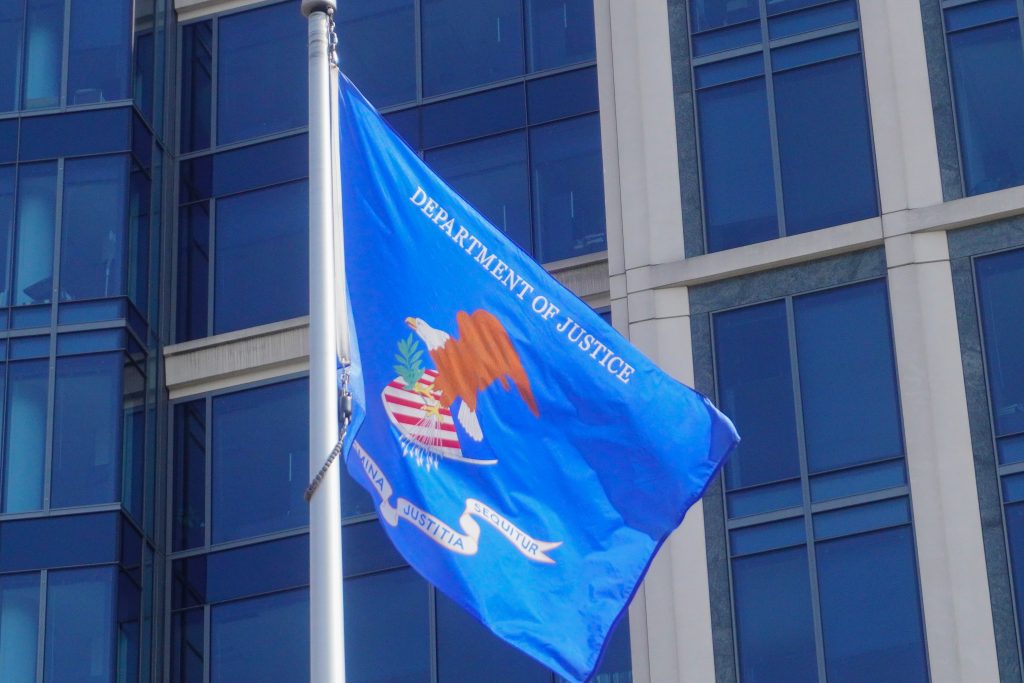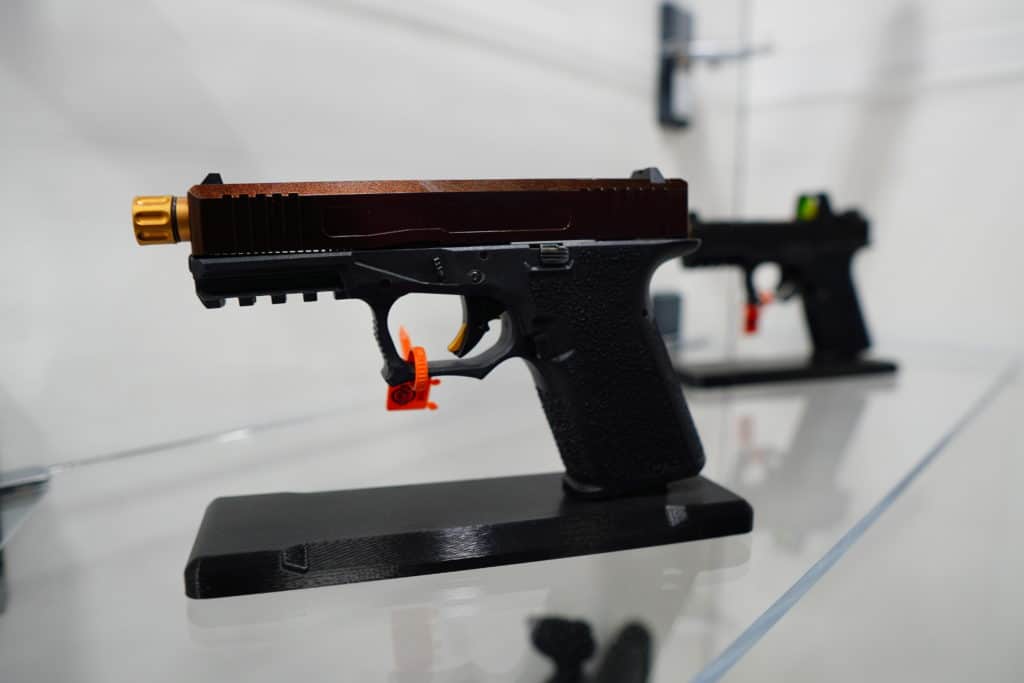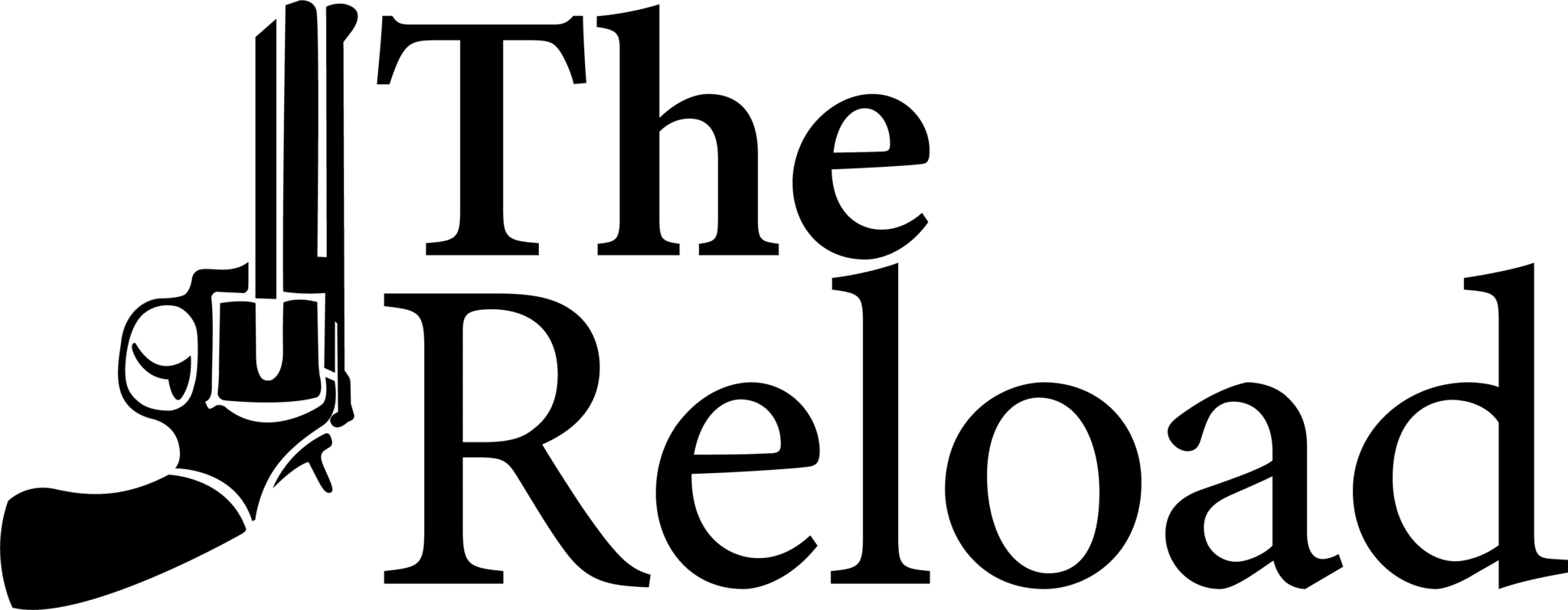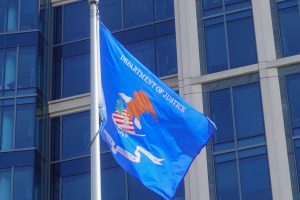The Trump Administration announced another newsworthy gun policy initiative this week.
On Thursday, the Department of Justice said it had opened a civil rights investigation into the delays and high fees associated with Los Angeles County’s gun-carry permitting process. Contributing Writer Jake Fogleman takes a close look at exactly what that means and what could come from the investigation, as well as potential future ones.
Then I take a deep dive into the Supreme Court’s ruling upholding the ATF’s “ghost gun” kit ban. I do my best to discern what exactly it does. Plus, firearms scholar David Kopel joins the podcast to give his perspective on the decision.

Analysis: Trump Admin Ramps Up Scrutiny of Local Gun Restrictions [Member Exclusive]
By Jake Fogleman
The early days of the second Trump administration have seen just a few concrete actions on gun policy, mostly limited to federal personnel moves and procedural reforms. Now, it is firing a shot across the bow of states and localities pushing the envelope on Second Amendment restrictions.
On Thursday, the Department of Justice (DOJ) announced a formal investigation into the Los Angeles County Sheriff’s Department and its handling of concealed handgun license applications. The DOJ said it was concerned that the department has been engaging in “a pattern or practice” of subjecting applicants to excessive fees and wait times before they can exercise their right to bear arms.
“This Department of Justice will not stand idly by while States and localities infringe on the Second Amendment rights of ordinary, law-abiding Americans,” Attorney General Pam Bondi said in a press release launching the probe. “The Second Amendment is not a second-class right, and under my watch, the Department will actively enforce the Second Amendment just like it actively enforces other fundamental constitutional rights.”
What This Means
The 1994 crime bill passed by Congress authorizes the Attorney General to launch a civil investigation over police agencies for “a pattern or practice of conduct…that deprives persons of rights, privileges, or immunities secured or protected by the Constitution or laws of the United States.”
According to the DOJ, pattern or practice investigations typically involve “gathering information directly from community members,… interviewing police and local officials, gathering information from other criminal justice stake holders, observing officer activities through ride-alongs and other means, and reviewing documents and specific incidents that are relevant to the investigation.”
Following this evidence-gathering phase, the investigators will issue a public report detailing whether or not they identified any conduct violating constitutional or statutory rights. If they do, they will work to come to a negotiated agreement with the investigated department “that incorporates specific remedies and that becomes a federal court order overseen by an independent monitor.” If the department resists coming to an agreement, the law gives the Attorney General the authority to initiate a lawsuit to enforce its preferred reforms.
In the case of investigating the LA County Sheriff’s Department, others have already done some of that legwork. DOJ acknowledged it took inspiration from a 2023 lawsuit from the California Rifle and Pistol Association that accused the department of overseeing application processing times that frequently exceed 18 months, even though state law only gives jurisdictions 120 days to approve or deny an application. Last August, a federal judge issued a limited injunction against the department after finding that such delays likely violated the Second Amendment rights of two individual plaintiffs in the case.
“The Civil Rights Division has reason to believe that those two plaintiffs are not the only residents of Los Angeles County experiencing similarly long delays that are unduly burdening, or effectively denying, the Second Amendment rights of the people of Los Angeles,” DOJ said in the press release.
LA has a history of abusing its permitting system under its previous leadership, and additional anecdotal evidence of other applicants facing similar delays has continued to pile up in news reports and online forums.
However, whether that will be enough to amount to a formal finding of a pattern or practice of violating Second Amendment rights is less clear. While the Supreme Court has specifically warned against permitting systems “put toward abusive ends” with wait times, fees, or other impediments, it hasn’t actually defined a threshold or test for when those boundaries are crossed (though lower federal courts are starting to offer answers).
Ultimately, though, the goal of the investigation may be more geared toward using the threat of a federal probe to encourage the department to change its practices. The DOJ statement hinted at that.
“Attorney General Bondi hopes that states and localities will voluntarily embrace their duty to protect the Second Amendment rights of their citizens,” it reads.
More to Come
DOJ said this new investigation would be part of “a broader review” of restrictive firearm laws nationwide, though it accused California of being “a particularly egregious offender.”
That could mean similar investigations or other interventions into state and local firearms regulatory practices. Should it choose to do so, it will have plenty of potential targets within the Golden State.
As The Reload has previously reported, the City of San Jose currently charges more than $1,300 for concealed carry applicants. Localities like La Verne, Morgan Hill, and Santa Clara County also charge close to $1,000 for their permits. There are likely others charging similar rates. Those fees are well above what state law requires, and are an order of magnitude more than what many other states charge for permits.
The administration already appears to have its eyes set on jurisdictions outside of California as well.
On Friday, it announced a similar, though less antagonistic, initiative aimed at gun-carry permitting practices in Washington, DC—another jurisdiction notorious for drawing out the application process. A new executive order from President Trump on “Making the District of Columbia Safe and Beautiful.” The order establishes a new federal “D.C. Safe and Beautiful Task Force” that will, among other things, collaborate with local officials “to increase the speed and lower the cost of processing concealed carry license requests in the District of Columbia.”
Bondi also pledged to bring these investigations forward in “any other states or localities that insist on unduly burdening, or effectively denying, the Second Amendment rights of their ordinary, law-abiding citizens.”
That could draw in cities like New York City, for instance. The Big Apple is a frequent target of gun owners’ ire over its own accusations of slow-walking permits. Though New York law caps permitting timelines to six months, the process frequently takes longer than a year or more, and the city is currently facing multiple lawsuits challenging those delays.
The Bottom Line
It remains to be seen what will ultimately come from the Trump administration’s new local Second Amendment focus. Formal investigations often move slowly, and the Justice Department’s bandwidth is likely already limited due to the administration’s flurry of action on other policy priorities.
But should it bear fruit, either by prompting new consent decrees or even preemptive policy changes by localities afraid of extra scrutiny, it could result in the biggest practical expansion of gun rights of any Trump Second Amendment initiative so far. After all, millions of people live in areas with the most onerous gun-carry permitting regimes–not to mention the many other gun restrictions that the DOJ could choose to target down the line.
Podcast: Firearms Policy Scholar David Kopel on Fallout from the SCOTUS ‘Ghost Gun’ Ruling [Member Early Access]
By Stephen Gutowski
This week, we’re taking a close look at the Supreme Court’s ruling in Bondi v. VanDerStok.
To do that, we have the Independence Institute’s David Kopel on the show. Kopel has written extensively on gun policy and been cited repeatedly at the Supreme Court. So, there are few people better qualified to dissect what the VanDerStok ruling means.
Kopel argued the decision upholding the ATF’s “ghost gun” kit ban is relatively narrow, but still likely applies to more than just the Polymer80 “buy build shoot” kits discussed at length by the majority. He also explained why the majority decided the case as a facial challenge and why he, along with Justices Thomas and Alito, disagrees with the use of that standard.
He said the Trump Administration could have tried to intervene in this case, but didn’t move fast enough. However, he argued that it can still try to undo the rule despite the decision. Kopel also gave his view on where the balance of the court lies on gun issues and whether there’s a reliable way to read what they might do with other pending gun cases.
You can listen to the show on your favorite podcasting app or by clicking here. Video of the episode is also available on our YouTube channel. An auto-generated transcript is available here. Reload Members get access on Sunday, as always. Everyone else can listen on Monday.
Get a 30-day free trial for a subscription to The Dispatch by clicking here.
Plus, Contributing Writer Jake Fogleman and I talk about Vanderstok. We also discuss the financial troubles hitting the gun-control group March for Our Lives. Finally, we cover an outlier federal ruling on New York City’s stun gun ban before highlighting DOJ’s plans for the ATF and investigation into California’s gun-carry permitting.

Analysis: What the Supreme Court ‘Ghost Gun’ Ruling Does [Member Exclusive]
By Stephen Gutowski
The Supreme Court has upheld the ATF’s “ghost gun” kit ban, but its ruling was fairly narrow. So, what exactly does it do?
On Wednesday, a 7-2 majority ruled the Biden-era survived what it categorized as a facial challenge. It argued there was at least one scenario where the items the ATF targeted fit within the underlying statute: now-defunct Polymer80’s “buy build shoot” kit and its unfinished frames.
“Yes, perhaps a half hour of work is required before anyone can fire a shot,” Justice Neil Gorsuch wrote for the majority in Bondi v. VanDerStok. “But even as sold, the kit comes with all necessary components, and its intended function as instrument of combat is obvious. Really, the kit’s name says it all: ‘Buy Build Shoot.’”
Outside of that, though, the majority declined to give further specific guidance. It offered up a myriad of caveats about the potential limits of its ruling, but no bright lines on how far the ATF could reach under the rule it upheld.
“Admittedly, our reasoning here has its limits. Just because some kits, like Polymer80’s, qualify as ‘weapons’ that ‘can readily be converted’ into working firearms does not mean all do,” Gorsuch wrote of the “buy build shoot” kits. “Think of the problem of the heap: Start with a heap of sand and begin removing grains; at some point, a heap no longer exists. That problem attends many artifact nouns. Even when used to capture unfinished products, artifact nouns generally reach only so far. It would be extravagant to speak of a novel when the author has dashed off only a few lines. Few would call a pile of unfinished logs a table. Subsection (A) may present a similar problem.”
“Weapon parts kits vary widely,” he continued. “Not all come as complete as the ‘Buy Build Shoot’ kit. Some, too, may require more time, expertise, or specialized tools to finish. And at some point a kit may be so incomplete or cumbersome to assemble that it can no longer fairly be described as a ‘weapon’ capable of ‘read[y] . . . conver[sion]’ into a working firearm. While we recognize the problem, this case does not require us to untangle exactly how far subsection (A) reaches.”
He echoed the same basic point for Polymer80’s unfinished frames.
“Here, again, our reasoning has its limits. In saying that a product like Polymer80’s qualifies as a ‘frame,’ we do not suggest that the GCA reaches, and ATF may regulate, any combination of parts susceptible of conversion into a frame or receiver with sufficient time, tools, and expertise. Like the term “weapon,” the artifact nouns “frame” and “receiver” have their bounds. Some products may be so far from a finished frame or receiver that they cannot fairly be described using those terms. But this case requires us to explore none of that.”
Writing in concurrences and dissents, many of the justices seemed to disagree on what exactly the implications of the ruling should be.
One of the most prominent disagreements was between Justices Samuel Alito and Sonia Sotomayor. They went back and forth over what precisely the Court had to say about what the ATF could regulate.
“The second point I address is the suggestion that the Act permits ATF to regulate only ‘all-but-assembled’ weapon parts kits and frames ‘as close to completion as possible,’” Sotomayor wrote, apparently alluding to Alito. “The Court’s opinion speaks for itself on that point and others. I encourage readers to go to the source, rather than rely on dissents, to understand what the Court holds. It is the Court’s ruling, not the one set forth by the dissents, that binds the lower courts.”
Alito responded in kind.
“Although Justice Sotomayor obviously wishes that the Court had gone further, all that the Court has actually held is that the ATF rule is not facially invalid because at least some applications of the rule are consistent with the statute,” he wrote. “And the two examples that the Court cites are (1) a kit that contains all the parts needed to make a semiautomatic pistol and that can be assembled in 21 minutes and (2) a frame that can be made functional simply by clipping off two plastic tabs and drilling a few holes, ante, at 17–18, 21. The Court has not held that any other kits or presently non-functional receivers are covered.”
Then there was the disagreement over whether the majority’s reasoning could lead to AR-15 owners being subject to the National Firearms Act (NFA). That’s because Justice Clarence Thomas and the plaintiffs argued semi-automatic AR lowers could be considered as easily convertible to fully-automatic lowers as those Polymer80 frames are to finished frames. The majority argued the government had no interest in trying to make that connection, and its opinion doesn’t justify it either.
“The government represents that AR–15 receivers do not ‘qualify as the receiver of a machinegun.’ Nor, the government emphasizes, has ATF ever ‘suggested otherwise,’” Gorsuch wrote. “Much the same can be said of our reasoning today. As we have stressed, a statute’s text and context are critical to determining whether (and to what extent) Congress used an artifact noun to reach unfinished objects. And, without doubt, the NFA and the GCA are different statutes passed at different times to address different problems using different language.”
So, the ruling gives the ATF a green light to go after dealers of kits akin to the “buy build shoot” one. But it opens up a lot of potential as applied challenges, too. The majority didn’t seem to mind that, though.
“The plaintiffs argue only that § 478.11’s provision addressing weapon parts kits is facially inconsistent with the statute. The Fifth Circuit adopted the same view after coming to the unqualified conclusion that weapon parts kits can never satisfy the statute’s two tests,” Gorsuch wrote. “To resolve this case, it is enough to say those assessments are mistaken. Because at least some weapon parts kits satisfy both of subsection (A) ‘s tests, §478.11 is not facially invalid.”
That’s it for now.
I’ll talk to you all again soon.
Go Birds,
Stephen Gutowski
Founder
The Reload







